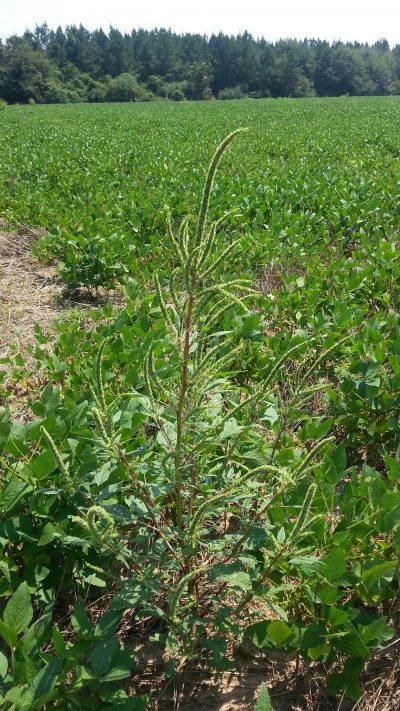Evan Anderson, UF/IFAS Extension Walton County, Horticulture Agent
Pests come in many forms, from tiny sucking mites to weeds that tower ten feet tall. Chances are, whatever the pest is, there’s a pesticide to fight it. Pesticides may tend to be the first solutions we think of when it’s time to combat a pest problem, but that fight should really include other options as well. If we use the same chemicals over and over again on the same pests, there is the chance they will eventually develop resistance.
Resistance means that among that a field full of armyworms (or mites, or pigweed plants, etc.), somewhere there are one or two that might be able to withstand a particular chemical. They are different in some way from the general population, which gives them the ability to survive when others do not. If they are allowed to grow up and produce offspring, all those new armyworms have a chance at being resistant as well, and soon the chemical we were using to control them is no longer effective. We have already seen this occur in more than one instance – for example, there are over 100 species of weed that are resistant to ALS-inhibitor herbicides such as imazapic or imazapyr. Be aware that it is not a matter of pests developing resistance to an individual chemical, but rather a group of chemicals. Pesticides are divided into groups based on their mode of action, and knowing which group any particular pesticide falls into can help in choosing chemical options from other groups to use in rotation.

Glyphosate is a Group 9 herbicide. Group codes help producers select product rotations using other modes of action to prevent resistance.
–

Herbicide resistant palmer amaranth plant in a glyphosate resistant soybean field. Most plants were controlled but not this one. Credit: UF/IFAS Archive.
Integrated pest management is an important concept in helping to avoid the buildup of resistance. Whenever possible, it encourages the use of other management strategies to prevent or reduce pest problems. The various methods of control include:
- Biological control, which uses natural predators and pathogens, such as releasing predatory or parasitic insects to control other insects.
- Cultural control, such as planting at the proper time, using resistant cultivars, rotating crops, or managing irrigation to avoid or reduce pest problems. An early planting of peanuts, for example, can help avoid some fungal leaf spot problems which spread rapidly in warm, wet weather.
- Mechanical control, or physically controlling or excluding pests. Trapping pests or using a fence to exclude them from an area are examples.
- Chemical control with pesticides is sometimes the only available option, or the only one that is feasible from a time or economic standpoint.
An important first step to managing any pest and in deciding how to manage it is to learn all you are able about it. Keep an eye on updates from specialists in your area to determine what problems are likely to show up. Weather conditions can seriously skew the numbers and types of pests we see in any given year, and sometimes outbreaks can be predicted.
In North Florida, keep an eye on the articles written by our Extension agents and specialists on Panhandle Agriculture e-News. You can find information on specific pests and control methods for those pests in our EDIS publications. For information on pesticide resistance, the EPA has more information, which includes links to resources on pesticide mode-of-action groups. As always, our county Extension agents are available as well.
- When Grasses Collide – Centipede vs. Bahiagrass in Your Pasture - August 26, 2022
- Time to Think About Pond Weeds - March 18, 2022
- Avoiding Pesticide Resistance - September 24, 2021
